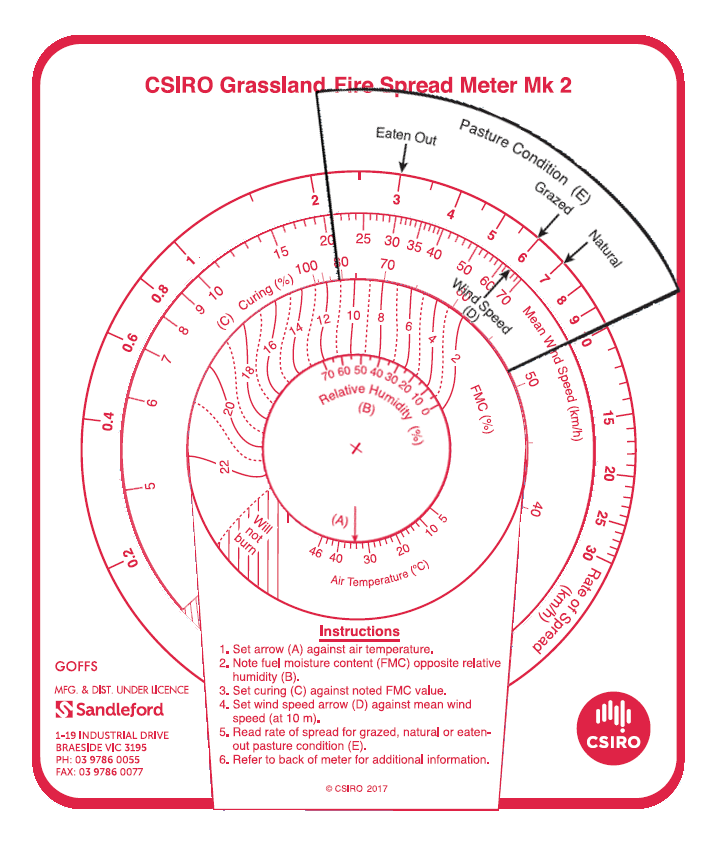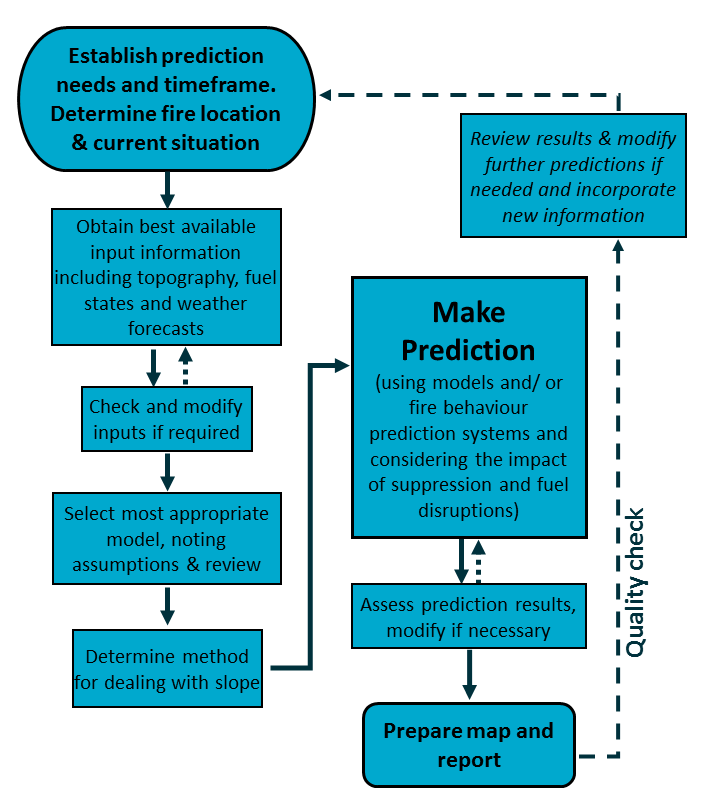The wind got stronger and changed direction and suddenly this huge fire front was bearing down upon us.
Unfortunately, stories similar to this are all too familiar in bushfire disasters. Both rural and urban communities can be caught out by fires that spread rapidly with devastating impacts on country, property, people and wildlife.
When summer sun beats down, rain is sparse and hot winds fan the land, our bush, shrubs and grasslands become tinder dry. Bushfires burning in such conditions are difficult to stop, particularly in heavily vegetated, rugged and inaccessible terrain.
While there’s little we can do immediately to change prevailing weather, we can do a lot to understand the conditions in which bushfires occur and to predict their likely spread and behaviour.
Timely and accurate fire behaviour prediction is vital. It supports effective firefighting and suppression and timely, specific alerts and warnings to the public during a bushfire crisis.

As the national science agency, CSIRO (and forerunner agencies) has been leading research to understand and predict the behaviour and spread of bushfires for close to 70 years. The pioneering work of Alan McArthur, from 1953 to 1978, set in train many of the experimental science-based models and meters that are used today by fire agencies to predict the likely progression of uncontrolled bushfires.
“The amazing tools that we now have at our disposal are a direct product of the continuous research to improve our understanding of bushfires,” says leader of the CSIRO Bushfire Behaviour and Risks team, Dr Andrew Sullivan. “For example, we have the Dry Eucalypt Forest Fire Model, the Mk 2 CSIRO Grassland Fire Spread Meter, and the Mk 2 CSIRO Fire Spread Meter for North Australia as well as fire spread simulators and software packages that integrate these."
Which prediction method to use
Fire spread predictions can be calculated manually and plotted on maps by hand, or generated using computer-based fire-spread simulators.
“People using a computer-based fire spread simulator can generate predictions quickly, with a minimum of fire behaviour knowledge and experience,” according to Dr Sullivan.
"The software allows more simulations to be readily generated for more fires and more scenarios," he says. "But compared to manual predictions calculated by an expert, computer-based simulations may be less robust and flexible because the people using them are generally not aware of embedded assumptions needed to make them work. Results from a single simulation can be poor. We recommend multiple simulations to account for variability in weather, vegetation (fuel) and ignition inputs."

Time is of the essence
Time is critical in determining the type of model or method that can be used for predicting fire spread.
The workflow here shows the steps involved in preparing a fire spread prediction. Establishing where a fire is and how long you have before a prediction is needed is the first step.
Throughout the fire season there will be numerous instances where there will be little or no time available to do a detailed prediction of fire spread.
Accurate information inputs on weather, fuel state and topography may not be readily available. People or assets may be under direct threat of an approaching fire, and determining whether or not they have time to evacuate is paramount.
On the run - Rule of thumb
Through scientific analysis of the rate of spread of high intensity bushfires burning in forest fuels, CSIRO has developed a rule of thumb for emergency situations where time is critical. This rule that can be quickly applied to calculate the potential speed of a fire burning in dry eucalypt forests, temperate shrublands or conifer forests.
“We have found that the forward spread of an established bushfire will be about 10% of the average wind speed measured in the open at 10 metres above the ground,” says Dr Sullivan.
“Our analysis found the figure to be closer to 8% however 10% is easy to calculate on the run and still provides a sound estimate of the bushfire’s forward spread for situations that are too complex or time critical for a complete analysis. Our studies found that this rule of thumb is more applicable under dry and windy conditions than milder conditions.”
Science knowledge and expert judgement
“We have found that the most reliable fire spread prediction is achieved when the best available scientific knowledge and tools are combined with sound application and judgement of experts in the field,” say Dr Sullivan.
CSIRO was instrumental in developing a curriculum to teach fire behaviour and prediction knowledge and contributes regularly to training all state fire agencies in these skills.
Expert judgement by fire and emergency service practitioners is incorporated into fire spread predictions through the selection of appropriate models for specific fuel types and conditions. On-ground experience provides vital input into fire spread where specific vegetation types may not be adequately covered by an existing model.
Amicus brings it all together
The Amicus fire behaviour knowledge base and decision support system provides a way to combine the expertise and knowledge of well-trained and experienced fire behaviour specialists with the best fire science.
Through a user friendly interface, Amicus, developed by CSIRO and Data61, enables the best quality information to be incorporated into manual fire spread predictions. It also allows reliable assessment of automatically generated predictions.
Amicus is a companion to the publication released by CSIRO and AFAC, A Guide to Rate of Fire Spread Models for Australian Vegetation, available from CSIRO.
Amicus brings together the collective science-based knowledge of the past 70 years research and development, with specialist expertise to help safeguard land, property, people and habitat. A version of Amicus is currently used operationally by the WA Department of Biodiversity, Conservation and Attractions.
Fire spread prediction is an achievement of CSIRO's 70 years of bushfire research for the nation.
